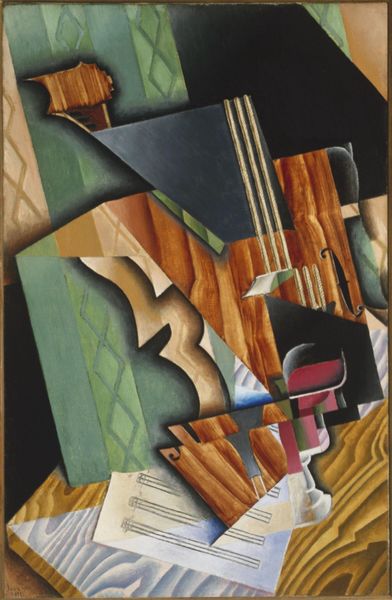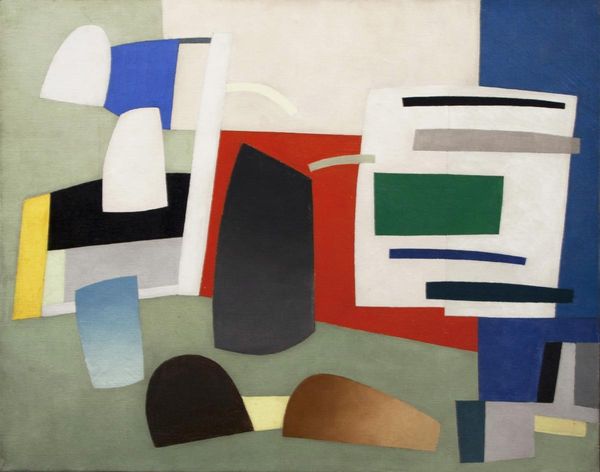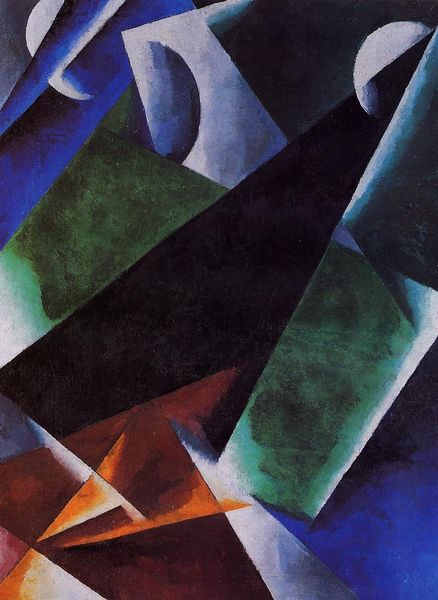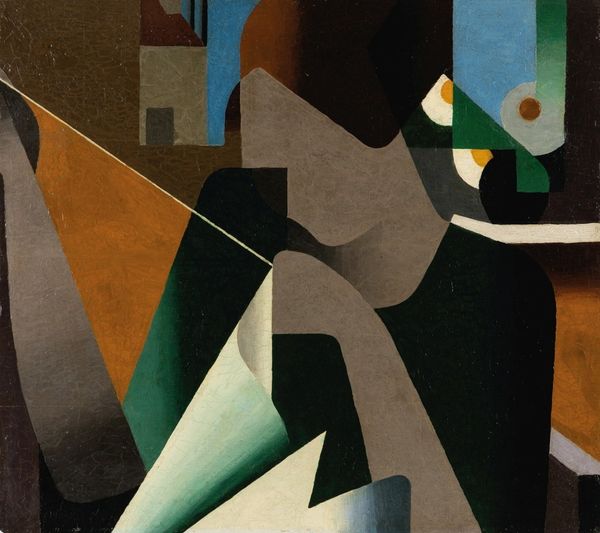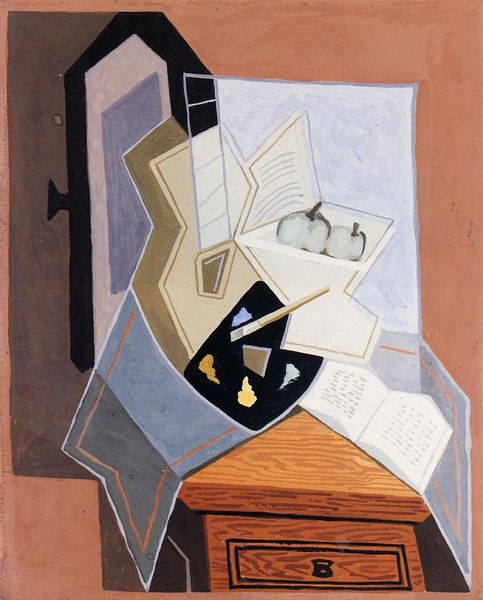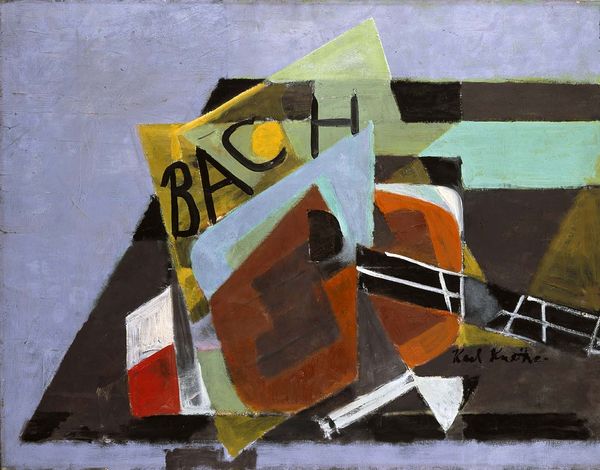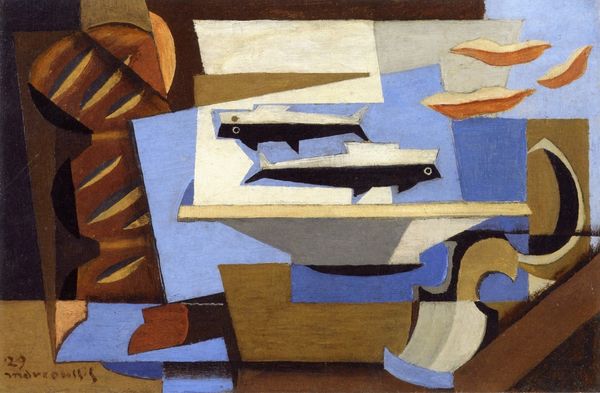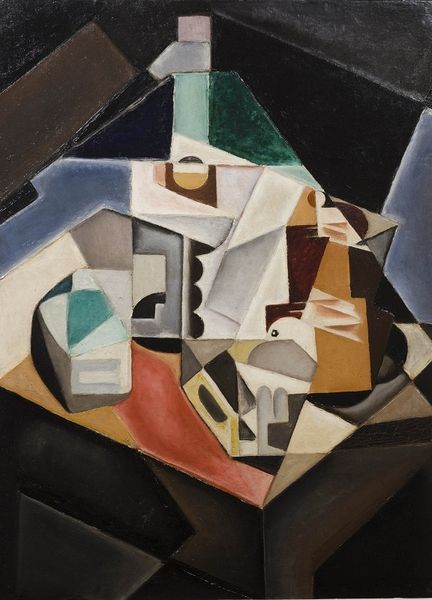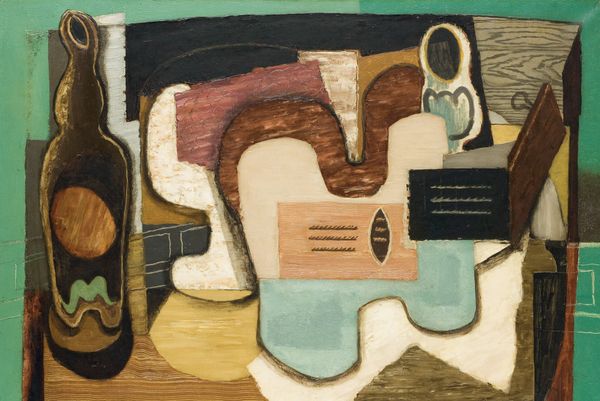
painting, oil-paint
#
cubism
#
painting
#
oil-paint
#
oil painting
#
geometric
#
modernism
Copyright: Public Domain: Artvee
Editor: We're looking at Juan Gris's "Guitar on a Table," an oil painting from 1915. It’s a very… fragmented image, lots of geometric shapes suggesting a guitar but not really showing the whole thing. What do you make of it? Curator: Well, consider the guitar itself. Beyond being an object, the guitar, particularly in Spanish art, embodies a whole cultural memory. What feelings or associations does the *idea* of a guitar bring up for you? Think flamenco, passion, evenings filled with music... Gris is pulling from all that. Editor: So, it’s more than just a still life; it's about tapping into cultural associations. Curator: Precisely. Gris isn’t just representing an object; he’s channeling the emotions, stories, and experiences tied to it. Note the table too, presented almost as another instrument. Editor: I see. How do these disjointed shapes relate to that idea, though? Curator: Fragmentation here speaks to how cultural memory itself is constructed. It's not a perfect, clear picture, but a collection of impressions and fractured recollections pieced together over time. Do you notice repeating shapes that mirror or complete each other? Editor: I think I see some... like echoing curves and lines throughout. Curator: Exactly! This mirroring reflects the ongoing nature of cultural traditions, continually reinterpreted across generations. We are the fragmented remnants of that which came before. The painting thus asks, what from your cultural milieu, as a viewer, shapes your memory? Editor: Wow, I was just seeing a broken guitar, but it’s a window into shared cultural experience and our connection to the past. Thanks, that really opens up the painting for me. Curator: My pleasure. Remember that art often functions as this conduit to both shared and personal experience!
Comments
No comments
Be the first to comment and join the conversation on the ultimate creative platform.
